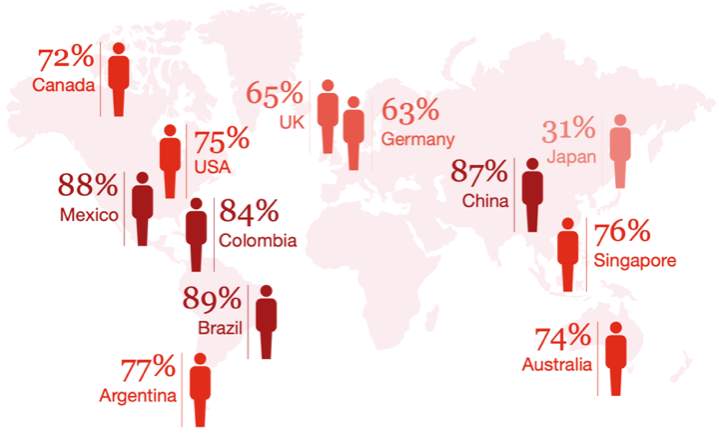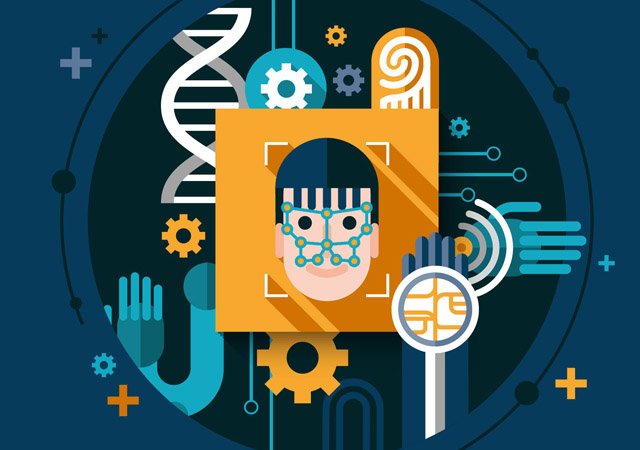本文是一篇管理学dissertation代写范文,题目为The relationship between the circular economy and sustainability,主要讨论了循环经济与可持续发展的关系。范文内容和格式仅供留学生参考学习,不得抄袭,如有Dissertation代写需要,请联系网站客服。
Contents目录
Chapter 1: Introduction
Chapter 2: Literature Review
Chapter 3: Methodology
Chapter 4: Results and Findings
Chapter 5: Conclusion
References
Chapter 1: Introduction
There is an urgent need to address the development and implementation of more sustainable production and consumption processes to find a solution to the economic, societal and environmental challenges which these processes are creating and sustaining (Geissdoerfer et al 2017; Mulvihill and Harris Ali 2017; George et al 2016; Markard 2012). These challenges include addressing environmental problems which includes issues such as loss of biodiversity; water, air and soil pollution; the decreasing level of finite resources and excessive land use through deforestation (Eggleton 2013; Galaz et al 2012; Rockstrom et al 2009). Societal challenges include a lack of work opportunities and access to education in many parts of the world; poor working conditions including child labour and long working hours; increased levels of poverty; inter- and intragenerational equity; and increasing levels of inequalities between rich and poor societal stakeholders (Mulvihill and Harris Ali 2017; Dobson 2016; Crane and Matten 2016). Economic issues include increased levels of risk in the supply chain; the liberalisation of trade; market deregulation and the pursuit of short term profits (Mulvihill and Harris Ali 2017; Dobson 2016; Crane and Matten 2016; Sachs 2015).
迫切需要解决更可持续的生产和消费过程的开发和实施,以找到解决这些过程造成和维持的经济、社会和环境挑战的方法(Geissdoerfer等人2017年;Mulvhill和Harris Ali 2017年;George等人2016年;Markard 2012年)。这些挑战包括解决环境问题,其中包括生物多样性的丧失;水、空气和土壤污染;有限资源水平的降低以及毁林造成的土地过度利用(Eggleton 2013;Galaz等人2012;Rockstrom等人2009)。社会挑战包括世界许多地区缺乏工作机会和受教育机会;恶劣的工作条件,包括童工和长时间的工作时间;贫困程度增加;代际和代际公平;贫富社会利益相关者之间的不平等程度越来越高(Mulvhill和Harris Ali 2017;Dobson 2016;Crane和Matten 2016)。经济问题包括供应链风险水平的增加;贸易自由化;市场放松管制和追求短期利润(Mulvihill和Harris Ali 2017;Dobson 2016;Crane和Matten 2016;Sachs 2015)。
These environmental, societal and economic challenges are all components of sustainability which stresses the need to address these through re-designing and innovating to ensure higher levels of intra and inter-generational equality and equity (Geissdoerfer et al 2017; Crane and Matten 2016). This concept of sustainability has been the basis of global initiatives such as the United Nations Sustainable Development Goals and has seen an increasing number of stakeholders, including businesses, engage in this process (United Nations Sustainable Development Goals 2019).
这些环境、社会和经济挑战都是可持续性的组成部分,强调需要通过重新设计和创新来应对这些挑战,以确保更高水平的内部和跨代平等和公平(Geissdoerfer等人2017年;Crane和Matten 2016年)。这种可持续性概念是联合国可持续发展目标等全球倡议的基础,越来越多的利益相关者,包括企业,参与这一进程(联合国2019年可持续发展目标)。
One of the business models and innovations which are perceived as being able to address these challenges is the Circular Economy which undertakes a restorative and regenerative approach to resource use (Ellen MacArthur Foundation 2017a; Pauli 2017; Braungart and McDonough 2009). The adoption of the Circular Economy is being undertaken on both a national level such as with the European Circular Economy package and at a business level by individual businesses (European Union 2019; Ellen MacArthur Foundation 2017a). There has therefore been an increased level of awareness, both amongst academic researchers and businesses, of the opportunities of the Circular Economy (Geissdoerfer et al 2017; Moreno et al 2016). However, whilst there is an increased level of awareness as regards sustainability and the Circular Economy, there is a lack of research in two key areas. Firstly, there is the need to evaluate the similarities and differences between sustainability and the Circular Economy; and secondly, there is the need to explore the relationship between sustainability and the Circular Economy which includes both the academic underpinnings and the practical application of this (Geissdoerfer et al 2017; Moreno et al 2016). This research seeks to provide a contribution to both of these areas, and this has led to the development of the following methodology which uses both a literature review and examples of business case studies to explore these topics (Cresswell and Cresswell 2018; Saunders et al 2016). Firstly, this will undertake a literature review to ascertain the similarities and differences between sustainability and the Circular Economy. Secondly, a case study approach will be undertaken to explore the relationship between sustainability and the Circular Economy by examining the practical application of these concepts by businesses. By undertaking this process, there is the opportunity to address current research gaps in the understanding of the concepts of sustainability and the Circular Economy and to explore this relationship and the challenges inherent to this (Geissdoerfer et al 2017; Moreno et al 2016).
Chapter 2: Literature Review
This dissertation topic will therefore seek to build on the current level of research to explore the relationship between the circular economy and sustainability by considering its impacts on business models and innovation (Geissdoerfer et al 2017).
The two main concepts which will be examined in this piece of research will be sustainability and the Circular Economy which will firstly be evaluated as separate concepts before the relationship between the two is further explored.
2.1 Sustainability
The concept of sustainability has led to a plethora of definitions which include the concepts of the conservation of finite resources, biodiversity and ecosystems (Lewis and Maslin 2018; Galaz 2012; Rockstrom et al 2009); the need to address current levels of production and consumption to deliver a quality of life for both current and future generations; the issue of inequality and how economic growth needs to be achieved within the parameters of ecosystems and become less exploitative of these (Mulvihill and Harris Ali 2017; Galaz et al 2012; Rockstrom et al 2009).
The concept of sustainability can therefore be presented as the tensions which occur between population, consumption and technologies which has an environmental impact (Lewis and Maslin 2018; Dobson 2016; Moreno et al 2016; Eggleton 2013). The use of these variables of population, consumption and technologies supports a range of perspectives as regards sustainability which not only include the relationship between these, such as the relationship between growing population and its impact on consumption, but may also undertake a particular area of focus such as the increasing breadth of research regarding the role of science and technology in decreasing social inequalities and increasing environmental resilience (Lewis and Maslin 2018; Braungart and McDonough 2009; Beder 2006). The complexity of the relationships between these variables of population, consumption and technologies relates to the dynamics and interdependencies between these and these may see the concepts of sustainable development and environment being depicted as trade-offs (Lewis and Maslin 2018; Moreno et al 2016; Sachs 2015). However, this inherent difficulty in the approach to sustainability was addressed by the Brundtland Report (1987) which states that sustainability should not be seen as a trade-off between economic and societal development and the environment, but rather as a boundary as to how these issues can be addressed without creating detrimental harm to the earth and thus negatively impacting future generations (Mulvihill and Harris Ali 2017; Crane and Matten 2016; Blowfield and Murray 2014).
The concept of sustainability can therefore be presented as supporting a process of complex problem-solving as regards the current challenges but also encourages and promotes the needs to address multiple stakeholders and their expectations (Feil and Schreiber 2017; Proctor 2014; Beder 2006). This is underpinned by principles such as participation and equity which have been developed within disciplines such as environmental management to increase the sharing of knowledge and collaboration amongst stakeholders (Lewis and Maslin 2018; Feil and Schreiber 2017; Mulvihill and Harris Ali 2017; Beder 2006). This requires an approach which supports increasing intragenerational prosperity and quality of life but also undertakes a restorative approach to safeguard intra and inter-generational needs (Mulvihill and Harris Ali 2017; Beder 2006).
In terms of its acceptance as an issue which needs addressing by government, business and societal stakeholders, sustainability has become increasingly institutionalised within these areas and have shaped different behaviours and decision-making to a greater degree (Lewis and Maslin 2018; Mulvihill and Harris Ali 2017; Geissdoerfer et al 2017).
2.2 The Circular Economy
The Circular Economy has gained increased levels of attention through the work and support of institutions such as the European Union and the Ellen MacArthur Foundation (European Union [EU] 2019; Ellen MacArthur Foundation 2017a). The concept of the Circular Economy and its application to production and consumption processes has developed to include different features from a range of concepts which include the shift to a closed loop system (Moreno et al 2016; Braungart and McDonough 2009). The range of theories relating to the circular economy include the shift from the cradle-to-grave to the cradle-to-cradle approach (Braungart and McDonough 2009); biomimicry (Benyus 2002); looped economy (Stahel 2010) and the blue economy (Pauli 2017) and these provide a variety of models and a process of continuous improvement which can be adapted to the contexts of businesses. The circular economy undertakes a methodology of continuous improvement which includes the application of increased knowledge, which may be gained through collaborations with other stakeholders, and the motivation of businesses to apply these changes (Pauli 2017; Moreno et al 2016).
The main components of the circular economy relate to its restorative and regenerative design which aims to reduce the amount of waste and energy by closing loops and thus reducing the level of leaks and emissions (Ellen MacArthur Foundation 2017a; Moreno et al 2016; Braungart and McDonough 2009). This requires a production design which assesses where these leaks and emissions occur and how these can be reduced or eliminated (Ellen MacArthur Foundation 2017a; Pauli 2017; Moreno et al 2016). In addition to this, issues such as maintenance, repair, reuse, remanufacturing, refurbishing and recycling are made more robust to not only ensure that these take place but to ensure that there is a higher volume of activity in these areas (Ellen MacArthur Foundation 2017a; Pauli 2017; Moreno et al 2016; Braungart and McDonough 2009).
The academic research as regards the circular economy has included an evaluation of specific areas of this concept such as closed loop value and supply chains (Govindan et al 2015); circular business models (Bocken et al 2016; Moreno et al 2016); and circular product design (Pauli 2017). These different approaches to the Circular Economy arguably mirror the different approaches to operations management where there is a drive towards the reduction of waste in the operations process through continuous improvement and focusing on the business priorities (Jacobs and Chase 2017; Slack et al 2016). The development and adaptation of the Circular Economy into these variations on the approach also provide the opportunity for a business to find a model which is contextually appropriate for its operations and this may assist a business in becoming more motivated to apply this to its operations (Pauli 2017; Geissdoerfer et al 2017).
2.3 Similarities and differences between the concepts of sustainability and the circular economy
The concepts of sustainability and the Circular Economy share a number of similarities and differences. Firstly, these similarities are based upon the global nature of the concepts due to the activities of one country having an impact on another, for example, the shipment of waste from the developed worked to the developing world (Lewis and Maslin 2018; Mulvihill and Harris Ali 2017; Moreno et al 2016). Secondly, these similarities also extend to concerns with the current model of production, consumption and technology which are not only having a negative impact on this generation, but, based upon these current patterns, will also detrimentally impact on future generations (Lewis and Maslin 2018; Geissdoerfer et al 2017; Moreno et al 2016). However, these production and consumption patterns also provide the opportunity for areas of competitive advantages which have yet to be fully explored (Geissdoerfer et al 2017). These areas may also be supported by global initiatives such as the Sustainable Development Goals which provide activities for businesses to address as part of its strategic operations which may assist in supporting development areas (United Nations Sustainable Development Goals 2019). Thirdly, these similarities also emphasise the importance of the need to provide higher levels of integration between the environment, society and economy which will require a systems-led approach rather than merely seeing the issue of sustainability as being an add-on or a tick box exercise (Lewis and Maslin 2018; Mulvihill and Harris Ali 2017; Geissdoerfer et al 2017).
In contrast to these similarities, the concepts of sustainability and the Circular Economy also have differences based upon the different contexts and the different purposes applied to each (Geissdoerfer et al 2017; Moreno et al 2016). The concept of sustainability is far broader than the concept of the Circular Economy and can be applied to a far broader scope of stakeholder commitments and initiatives and areas of risk, such as resource security, and opportunities, such as addressing different market needs (Lewis and Maslin 2018; Geissdoerfer et al 2017; Pauli 2017). The circular economy undertakes a more specific approach towards sustainability and is therefore part of this concept, providing a potential framework for the increased use of sustainable production and consumption methods (Ellen MacArthur Foundation 2017; Pauli 2017; Braungart and McDonough 2009).
2.4 The relationship between sustainability and the Circular Economy
The relationship between sustainability and the Circular Economy is based upon the approaches towards increasing the awareness of the interdependencies between the economy, society and the environment but these may undertake different approaches, perspectives and methodologies (Pauli 2017; Geissdoerfer et al 2017; Moreno et al 2016). These concepts also have conceptual differences, such as sustainability being focused on the integration between economy, society and the environment presenting thee as equal factors (Lewis and Maslin 2018; Geissdoerfer et al 2017). In contrast to this perspective, the Circular Economy prioritises the economic perspective which then has a direct benefit on society and the environment and can be seen as a more business-centric approach (Pauli 2017; Geissdoerfer et al 2017). However, as contexts change and technological innovations are developed, there is a focus on how these can impact upon sustainability and the Circular Economy and these may provide a greater synthesis between the two concepts. Technological innovations, such as the Internet of Things, enable higher levels of data collection and analysis as regards issues such as the use of products, such as household goods, to support greater efficiencies and improvements (Trott 2017). The use of this data may assist in tracking the lifecycle of products and to support higher levels of recycling and reuse (Lewis and Maslin 2018; Pauli 2017; Trott 2017).
2.5 Research gaps
Whilst there is a relationship between these two concepts, there has been a lack of academic research into this relationship and the aforementioned similarities and differences remain under-researched (Geissdoerfer et al 2017). This research gap therefore provides an opportunity for an increased level of understanding in terms of increasing conceptual clarity and the rationale for the definition and use of these concepts by stakeholders including government, business and societal stakeholders (Feil and Schreiber 2017; Geissdoerfer et al 2017). By undertaking this research gap, this dissertation aims to address how the concepts of sustainability and the Circular Economy can be more successfully integrated to support social equality and inclusion; increase environmental resilience and support economic prosperity (Lewis and Maslin 2018; Geissdoerfer et al 2017; Moreno et al 2016).
This research gap also needs to address how the relationship between sustainability and the Circular Economy is being perceived by policy makers and businesses in order to gain a better understanding of the influence of this relationship on business models, supply chains and innovation systems (Geissdoerfer et al 2017). This also needs to consider a widening of the concepts of sustainability and the Circular Economy to include emerging concepts such as the Performance Economy (Stahel 2010) and the Sharing Economy (Bocken et al 2014). There is also a need to evaluate how the actual impacts of the Circular Economy are being evaluated and analysed against performance measurements, such as the triple bottom line; the strength of the sustainability and the impact on consumption, such as slowing down resource use (Bocken et al 2016).
2.6 Research aim and objectives
The aim of this research is to build on the current level of research to explore the relationship between sustainability and the Circular Economy by considering its impacts on business models and innovation.
Based upon this research aim, the research objectives for this research are therefore:
Objective 1: To examine the similarities and differences between sustainability and the Circular Economy.
Objective 2: To investigate the impacts of sustainability and the Circular Economy on business models and innovation.
Objective 3: To evaluate the relationship between Sustainability and the Circular Economy.
Chapter 3: Methodology
3.1 Research paradigm and assumptions
The selected research paradigm is the interpretivist approach which supports the evaluation and exploration of complex relationships which contain a range of variables (Cresswell and Cresswell 2018; Saunders et al 2016; Bryman and Bell 2015). Interpretivism allows for a range of perspectives to be undertaken and, in the context of this research, supports the range of perspectives which are explored in both the literature review and the findings chapter (Saunders et al 2016; Neuman 2013).
This range of interpretations which form the basis of the interpretivist paradigm are also related to the selected philosophical outlook and assumptions of the researcher (Cresswell and Cresswell 2018). Within this research, these assumptions include both the ontological and epistemological outlook (Cresswell and Cresswell 2018; Saunders et al 2016; Bryman and Bell 2015). The ontological (nature of reality) assumption within the interpretivist paradigm enables the development of multiple meanings which are gathered from the research process and thus require a flexible approach to ensure that these meanings are communicated (Cresswell and Cresswell 2018; Bryman and Bell 2015). The epistemological (validity of knowledge) assumption within the interpretivist paradigm is addresses the potential reductionist approach which may occur if the research is focused upon a specific theory or concept, and thus enables the research to develop different interpretations which can support the creation of new knowledge and a greater understanding of a concept (Cresswell and Cresswell 2018; Neuman 2013). Given the subject matter of this research, and the need to evaluate current levels of understanding and how these can develop new levels of understanding, the ontological and epistemological assumptions within the interpretivist paradigm were selected as the most appropriate research methodology and this was further emphasized by the evaluation of other research methodologies, such as positivism (Saunders et al 2016; Gill and Johnson 2010).
In contrast to interpretivism, positivism undertakes a linear cause and effect approach which seeks to establish a relationship between a small set of variables (Saunders et al 2016; Bryman and Bell 2015). Within the context of this research, the positivist approach can be applied to some areas such as the impact of increased regulation upon businesses and the approach to sustainability (Bryman and Bell 2015; Collis and Hussey 2014). However, the disadvantage of this approach includes its reductionist perspective which would entail ignoring some of the more complex issues such as the differences in the rationale for an increased level of sustainability (Saunders et al 2016; Bryman and Bell 2015). In this context, it was decided that the positivist approach would be too narrow to adequately evaluate and investigate the research aims and objectives.
3.2 Research approach
The research approach will employ an exploratory approach by exploring the general themes of the literature review and drawing out the similarities and differences between sustainability and the Circular Economy and then exploring the relationship between these (Cresswell and Cresswell 2018; Bryman and Bell 2015). The exploratory approach assists in increasing the level of understanding of a particular issue or problem by providing the researcher with a flexible approach to the research process which allows for the research to evolve and change as new information is discovered and analysed (Saunders et al 2016; Collis and Hussey 2014; Gill and Johnson 2010). The methodology will also undertake an inductive approach which relates to the context of the data which will be explored in the case studies of the selected businesses (Cresswell and Cresswell 2018; Yin 2018; Saunders et al 2016).
3.3 Criticisms of the selected interpretivist approach
Whilst the strengths of the interpretivist approach include its flexibility and ability to support the exploration of the development of a range of meanings based upon the complexity of the research subject, the criticisms of this approach also need to be acknowledged (Cresswell and Cresswell 2018; Gill and Johnson 2010). The criticisms of interpretivism include the lack of research conventions, in comparison to the positivist approach, which may lead to difficulties in areas such as reliability, validity and generalisability (Cresswell and Cresswell 2018; Saunders et al 2016; Lee and Lings 2008). This lack of research conventions requires the researcher to develop a framework which not only addresses any potential weaknesses in the research process, such as bias, but also presents the data findings and analysis to ensure that the these address the research aim and objectives (Neuman 2013; Gill and Johnson 2010; Riley et al 2000). In this piece of research, the methodology will include a literature search to provide the similarities and differences between sustainability and the Circular Economy (research objective 1) and a case study approach to explore the impacts of these on business models and innovation (objective 2). Both the literature review ad the case study approach will be used in the response to objective 3 which seeks to evaluate the relationship between sustainability and the Circular Economy. The presentation of the data findings will therefore undertake a thematic analysis based upon the research aim and objectives (Yin 2018; Saunders et al 2016; Bryman and Bell 2015; Dul and Hak 2008).
3.4 Data collection
The data collection will only include secondary data from academic websites, including Google Scholar, and publicly available websites, including industry, business and news sites. This secondary data will be predominately qualitative in nature although some quantitative data may be included. It is acknowledged that the use of secondary data is a limitation for the research, but this is addressed by using both academic sources to support the exploratory approach and real-world case studies to support the inductive approach and thus using the mixed methods approach (Saunders et al 2016; Bryman and Bell 2015; Molina-Azorin and Cameron 2010).
3.5 Mixed Methods approach
The use of the mixed methods approach has been applied to this piece of research for the following reasons (Cresswell and Cresswell 2018; Saunders et al 2016). Firstly, by using a number of secondary sources, bot academic and real-world, there is a reduced risk of bias which can occur if only one data source, or a mono-method approach, is utilised (Molina-Azorin and Cameron 2010; Tashakkori and Teddlie 2010). Secondly, the mixed method approach allows for the data to be analysed in a number of ways including the sequential approach which has been utilised for this research (Cresswell and Cresswell 2018; Molina-Azorin and Cameron 2010). This sequential approach sees the data from the academic sources analysed first and then this is followed by the data from the real-world case studies. This allows for the examination of both areas to be explored individually and to then undergo a process of synthesis to support the inductive approach (Cresswell and Cresswell 2018; Bryman and Bell 2015). Thirdly, the mixed methods approach is often utilised and has become increasingly popular in business based research, for example strategic management studies, as it supports the development of practical solutions to address contemporary business challenges, such as the issue of sustainability and the application of frameworks, such as the Circular Economy (Molina-Azorin and Cameron 2010; Tashakkori and Teddlie 2010).
3.6 Sample
The sample for the secondary data collection was initially purposive and for the literature review needed to include the following search parameters: sustainability; Circular Economy; and sustainability and the Circular Economy (Cresswell and Cresswell 2018; Bryman and Bell 2015). It was essential for each academic source to have a minimum of one of these search terms in order to be included in the results and findings chapter.
The academic journals which have been used to evaluate the similarities and differences between sustainability and the Circular Economy also provided the opportunity for snowball sampling due to the initial academic source providing references which could then be used as additional sources of information (Saunders et al 2016; Bryman and Bell 2015).
The sample for the case studies were based upon the application of sustainability and the Circular Economy. The case studies for sustainability were based upon organisations who had applied and were reporting the use of the United Nations Sustainable Development Goals. The case studies for the Circular Economy were selected from the case studies which are publicly available on the Ellen MacArthur Foundation website (Ellen MacArthur Foundation 2017).
3.7 Reliability and validity
The issues of reliability and validity are dependent upon the research paradigm, in this case interpretivism, and the data collection and analysis decisions which include the use of secondary data and the mixed methods approach (Cresswell and Cresswell 2018; Saunders et al 2016; Bryman and Bell 2015). Within the interpretivist paradigm, reliability is lower in comparison to the positivist paradigm due to the research being context-specific making it difficult to fully replicate should the same research be carried out at a future point in time (Cresswell and Cresswell 2018; Bryman and Bell 2015; Neuman 2013). Validity, however, is often greater in the interpretivism, in comparison to positivism, due to the research being context specific thus providing a richer source of data on areas such as different business approaches to the integration of sustainability and Circular Economy principles (Cresswell and Cresswell 2018; Saunders et al 2016).
The selection of the mixed methods approach also has an impact upon reliability and validity and this is dependent upon the type of data which is collected and analysed (Cresswell and Cresswell 2018; Neuman 2013). The issue of validity in greater in the collection and evaluation of qualitative data due to it being context-specific; whilst the use of quantitative data supports higher levels of validity as this data can be replicated in future research (Saunders et al 2016; Bryman and Bell 2015).
3.8 Research ethics
Research ethics need to consider what is being researched and how the data is being collected and to ensure that this process does not create any harm for any of the research participants, including any those who may be providing primary data; the researcher and the university (Cresswell and Cresswell 2018; Saunders et al 2016; Bryman and Bell 2015; Resnik 2015). Research ethics often follows an established code of conduct and includes the addressing of potential ethical concerns such as informed consent; data confidentiality and anonymity and the right of research participants to withdraw from the process (Cresswell and Cresswell 2018; Jankowicz 2005; Lee-Treweek and Linkogle 2000). Whilst these ethical issues are particularly important in the collection and analysis of primary data, there is also a need to evaluate these in the collection and analysis of secondary data which has been undertaken for this piece of research (Saunders et al 2016; Bryman and Bell 2015). It is therefore incumbent upon the researcher to ensure that the secondary data collected and analysed for this piece of research is presented in an accurate and fair manner and also includes the original source of this data in the reference list. In addition, the original secondary data can also be provided in the appendices to support further verification, if required (Collis and Hussey 2014).
Chapter 4: Results and Findings
The literature review for the results and findings chapter was based upon the following key search terms: ‘Circular Economy’; ‘Sustainability’ and ‘Circular Economy and Sustainability’. Due to the longevity of sustainability and its broader approach, the majority of articles were related to the issue of sustainability, followed by circular economy and the lowest number related to articles which included both ‘circular economy and sustainability’. However, there is also evidence that there is a growing number of articles on the Circular Economy as this process is being increasing supported by national governments and being implement








